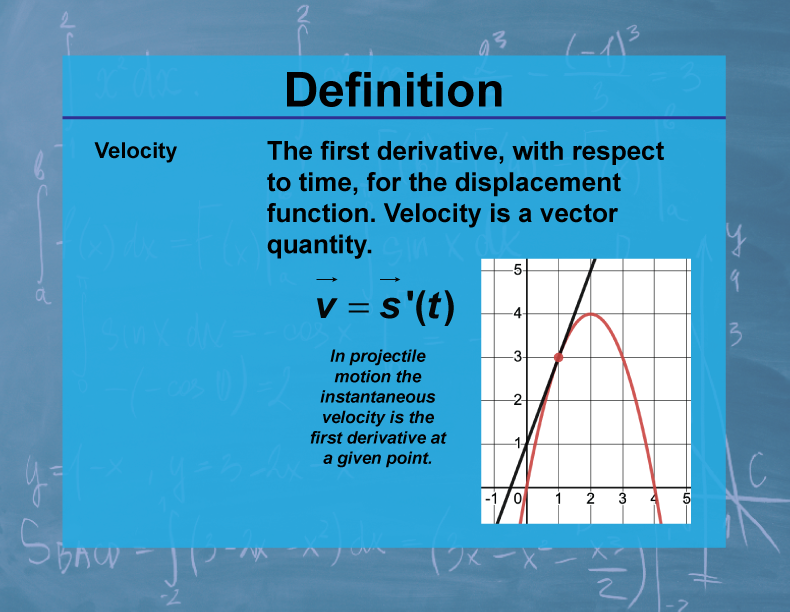
Display Title
Definition--Calculus Topics--Velocity
Display Title
Definition--Calculus Topics--Velocity

Topic
Calculus
Definition
Velocity is the rate of change of position with respect to time. In calculus terms, it is the first derivative of the position function with respect to time.
Description
Velocity is a fundamental concept in calculus and physics, representing how quickly and in what direction an object is moving. It's a vector quantity, having both magnitude (speed) and direction. In calculus, velocity is crucial for understanding the relationship between position, speed, and acceleration, and it plays a key role in many applications of differentiation and integration.
In mathematics education, the concept of velocity helps students understand the practical applications of derivatives. It provides a concrete example of how calculus can be used to analyze real-world phenomena. Understanding velocity also prepares students for more advanced topics in physics and engineering, where analyzing motion and rates of change is crucial.
Teacher's Script: "Imagine you're analyzing the motion of a car. If its position is given by s(t) = t3 - 6t2 + 9t meters after t seconds, how would we find its velocity? We need to differentiate s(t) with respect to t. This gives us v(t) = 3t2 - 12t + 9 m/s. What does this tell us about the car's motion? When is it moving forward or backward? When does it stop? By understanding velocity, we can answer these questions and predict the car's behavior at any time."
For a complete collection of terms related to Calculus click on this link: Calculus Vocabulary Collection.
| Common Core Standards | CCSS.MATH.CONTENT.HSF.IF.C.7, CCSS.MATH.CONTENT.HSF.BF.A.1.C |
|---|---|
| Grade Range | 11 - 12 |
| Curriculum Nodes |
Algebra • Advanced Topics in Algebra • Calculus Vocabulary |
| Copyright Year | 2023 |
| Keywords | calculus concepts, limits, derivatives, integrals, composite functions |